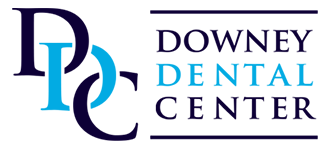Oral Cancer – A Topic Worth Covering
 Aside from a handful of graphic smokeless tobacco warning ads and Michael Douglas’ cautionary PSA campaign, oral cancer probably hasn’t garnered enough media attention to create a blip on your radar – but it should!
Aside from a handful of graphic smokeless tobacco warning ads and Michael Douglas’ cautionary PSA campaign, oral cancer probably hasn’t garnered enough media attention to create a blip on your radar – but it should!
While oral cancer (oral cavity and oropharynx cancers collectively) accounts for 2.9% of all cancers diagnosed in the United States, it is responsible for 1.6% of all cancer deaths. The death rate associated with oral cancer is particularly high because it is generally not discovered until late in its development.
Often painless, early stage symptoms can appear non-threatening - think a white or red patch of tissue in the mouth or a shallow lesion that resembles a common canker sore. Conversely, the symptoms associated with later stages of oral cancer are harder to ignore. They include:
- A sore that bleeds or doesn't heal
- A growth, lump, or thickening of the skin or lining of your mouth
- Tongue pain
- Jaw pain or stiffness
- Difficulty or painful chewing, swallowing, or speaking
- Prolonged hoarseness
- Numbness in the oral / facial region
- Persistent earache in the same ear
As a rule of thumb, any of the above symptoms that persist for longer than a two-week period should undergo further examination by a medical professional.
While oral cancer isn’t new, recent years have seen a shift in risk factors and population segments impacted. Historically, the primary risk factors associated with oral cancer have been age (the average age at diagnosis is 62 years), tobacco use, excessive alcohol consumption, and the combination of the two (the risk being greater for people who use both tobacco and alcohol). However, recent data shows that the fastest growing segment of the oral cancer population is non-smokers under the age of fifty. According to the Academy of General Dentistry, a quarter of cases have no risk factors for cancers of the mouth (i.e. tobacco or alcohol use). This shift coincides with an overall decline in smoking (which is great) and an increase in the number of young people diagnosed with oral cancer related to human papillomavirus number 16 (HPV16), a disease transmitted through sexual contact.
So, how can you prevent oral cancer? Aside from the obvious - avoiding tobacco and excessive alcohol consumption – early detection is the key. This is one more reason why dental professionals play a vital role in your overall health. Not only do we examine the general health and appearance of your teeth, but also of your oral tissues. This is important because tissue changes in the mouth that might signal the beginnings of cancer often go undetected to the untrained eye, but these can be seen and felt easily by dental professionals. It’s also critical for patients to have an open line of communication with dental professionals. Be sure to let us know if you’ve experienced any changes in your medical history - even if you think it’s not important. This is also where patient transparency comes into play. Be honest about your tobacco and alcohol usage; we’re not here to judge!
Additionally, the importance of self-awareness cannot be overstated. To help increase the public’s knowledge of oral cancer and the role self-exams can play in early detection, the Oral Cancer Foundation launched www.checkyourmouth.org. This website is packed with great information, including a how-to video on self-screening. So, don’t wait until your next visit – open wide and take a look inside today!
If you notice any unusual changes in your mouth or experience any discomfort, please feel free to contact Downey Dental Center with any questions or to schedule a consultation. We are well trained to detect oral cancer and look forward to helping you maintain good oral health!


